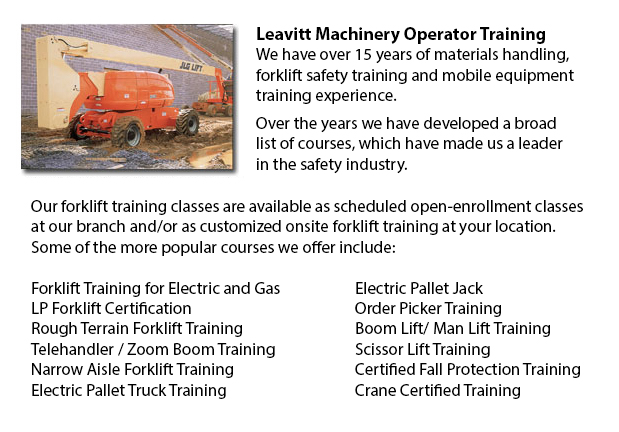
Aerial Platform Training Fort Mcmurray - Aerial platform lifts are able to accommodate various tasks involving high and tricky reaching places. Often used to perform regular upkeep in buildings with high ceilings, prune tree branches, hoist heavy shelving units or fix phone cables. A ladder could also be utilized for some of the aforementioned tasks, although aerial lifts provide more safety and stability when correctly used.
There are a number of different types of aerial hoists available, each being able to perform slightly different tasks. Painters will usually use a scissor lift platform, which is able to be utilized to get in touch with the 2nd story of buildings. The scissor aerial lifts use criss-cross braces to stretch and extend upwards. There is a platform attached to the top of the braces that rises simultaneously as the criss-cross braces lift.
Cherry pickers and bucket lift trucks are a further version of the aerial hoist. Typically, they possess a bucket at the end of an elongated arm and as the arm unfolds, the attached bucket platform rises. Platform lifts utilize a pronged arm that rises upwards as the lever is moved. Boom hoists have a hydraulic arm which extends outward and elevates the platform. Every one of these aerial hoists require special training to operate.
Training programs presented through Occupational Safety & Health Association, acknowledged also as OSHA, deal with safety techniques, machine operation, repair and inspection and machine weight capacities. Successful completion of these education programs earns a special certified license. Only properly qualified individuals who have OSHA operating licenses should operate aerial lifts. The Occupational Safety & Health Organization has established guidelines to uphold safety and prevent injury while utilizing aerial platform lifts. Common sense rules such as not utilizing this machine to give rides and making sure all tires on aerial platform lifts are braced in order to hinder machine tipping are mentioned within the rules.
Regrettably, statistics show that more than 20 operators pass away each year when running aerial platform lifts and 8% of those are commercial painters. Most of these mishaps are due to inappropriate tire bracing and the lift falling over; therefore a lot of of these deaths had been preventable. Operators should make sure that all wheels are locked and braces as a critical safety precaution to prevent the machine from toppling over.
Other suggestions involve marking the surrounding area of the machine in an obvious manner to protect passers-by and to ensure they do not approach too close to the operating machine. It is vital to ensure that there are also 10 feet of clearance amid any electrical cables and the aerial lift. Operators of this equipment are also highly recommended to always have on the proper safety harness when up in the air.
-
Telehandler Training Fort Mcmurray
Telehandler Training Fort Mcmurray - Telehandlers or also called Telescopic handlers are very popular piece of heavy construction equipment most often utilized in agriculture and construction industries. These machines have extreme reaching capabilit... More -
Counterbalance Forklift Training Fort Mcmurray
Counterbalance Forklift Training Fort Mcmurray - Counterbalance Forklift Training courses are always in high demand. The Counterbalance forklift is a forklift that is made along with a weight that counters the balance, evenly spreading the weight of... More -
Heavy Equipment Training School Fort Mcmurray
Heavy Equipment Training School Fort Mcmurray - HEO or the heavy equipment operator courses will provide you with the knowledge and skills required in order to enter the workforce as an entry level heavy machine operator. In this 12 week course in ad... More -
Operator Safety Training, Re-Qualification Training, In-House Instructor Training in Fort McMurray
Used in just about all boat yards, industrial construction sites or warehouse operations, the forklift is a very important component in order to help pick up and transfer supplies. The reach feature of a lift truck could help improve the applications... More -
Heavy Equipment License Fort Mcmurray
Heavy Equipment License Fort Mcmurray - A heavy equipment license can be obtained by finishing a certification and preparation course at a private training school or a vocational school. This license would qualify you to operate various types of heav... More -
Boom Lift License Fort Mcmurray
Boom Lift License Fort Mcmurray - To operate an aerial boom lift, operators must be licensed through training that can be obtained utilizing both practical training and classroom sessions and by obtaining a boom lift license. Instruction must be give... More -
Skid Steer Loader Training in Fort McMurray
A skid-steer loader is actually an engine powered machine that consists of a small and rigid frame. It is outfitted along with lift arms which are used to attach to different labor saving attachments and tools. Normally, skid-steer loaders are four-w... More -
Order Picker Ticket Fort Mcmurray
Order Picker Ticket Fort Mcmurray - Order picker's enables warehouse employees to lift pallets using forks. Likewise called a stock picker, this electrically-powered equipment is like a forklift except that an order picker is likewise utilized to lif... More

Forklift Training Fort McMurray
TOLL FREE: 1-888-254-6157
Fort McMurray, Alberta
forklifttrainingfortmcmurray.com
Email Us
About Us


